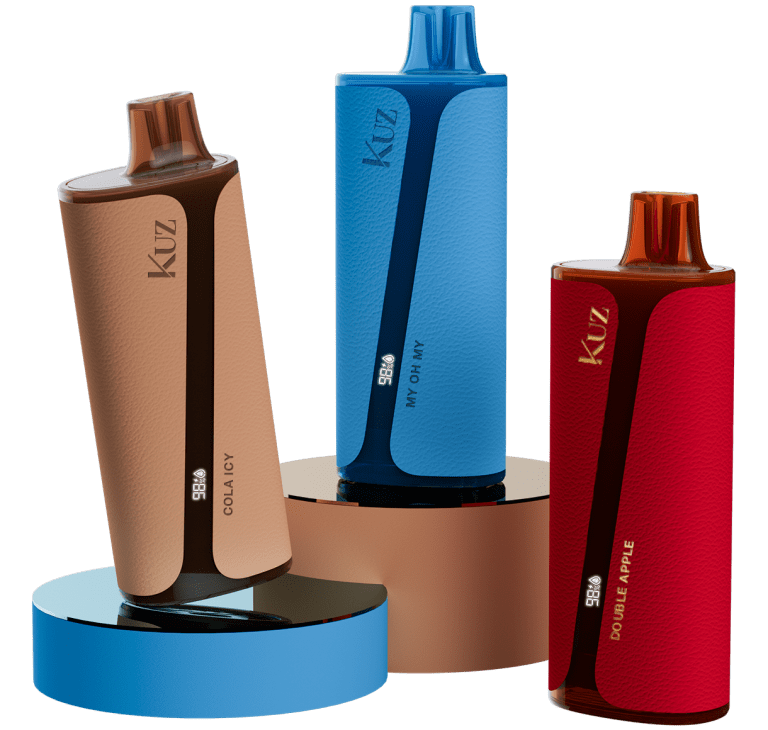As vaping grows in popularity, one common question many smokers have when switching to vaping is: “How many cigarettes are equivalent to a vape?” The answer is not as straightforward as it seems, as several factors play a role in determining nicotine equivalence between cigarettes and vapes.
Understanding Nicotine in Vapes and Cigarettes
Cigarettes and vapes deliver nicotine differently, making direct comparisons challenging. Cigarettes deliver nicotine through combustion, producing smoke that contains nicotine along with harmful chemicals. In contrast, vapes heat a liquid (e-liquid) containing nicotine, creating vapor that the user inhales.
Typically, the nicotine concentration in a cigarette is about 1 milligram, though this can vary depending on the brand. On the other hand, vape liquids come in various strengths, ranging from nicotine-free to as high as 50mg/ml. The nicotine strength and delivery method in vaping devices vary considerably, which influences how much nicotine is absorbed by the body.
How to Estimate Nicotine Equivalence
To make a general comparison, let’s consider how nicotine is absorbed. For instance, one milliliter of vape juice containing 6mg of nicotine can be roughly equivalent to one cigarette in terms of nicotine absorption. However, this equivalence is only a rough estimate and depends on factors like the type of device, wattage, puff duration, and inhalation technique.
For instance, a 5% nicotine vape (50mg/ml) delivers much more nicotine per puff than lower-strength vape liquids. If you’re using a disposable vape with 400 puffs, that could be roughly equal to two packs of cigarettes, depending on the nicotine strength. Puff count also plays a role. A cigarette typically provides around 10-15 puffs, while a vape may require more puffs to achieve the same nicotine hit due to the slower absorption rate in vaping.
Factors Influencing Nicotine Absorption
Several factors affect how much nicotine you absorb while vaping versus smoking:
- Nicotine Strength: Higher nicotine concentrations in vape juice lead to higher absorption.
- Device Type: Advanced vapes, such as sub-ohm devices, tend to deliver more vapor and thus more nicotine per puff.
- Puff Duration and Intensity: Deep, long draws will result in more nicotine absorption, much like with smoking. Similarly, frequent puffing increases intake.
Transitioning from Smoking to Vaping
For smokers looking to switch to vaping, understanding nicotine intake is crucial to avoid under- or over-consumption. It’s often recommended to start with a nicotine level that matches your current smoking habits and gradually decrease it over time to reduce dependence. If you’re smoking a pack a day, starting with a vape juice of around 12mg/ml nicotine might provide a similar experience.
Additionally, using a vape calculator can help estimate how much nicotine you’re consuming compared to smoking. For example, 100 puffs from a 5% vape could be equivalent to about 7-10 cigarettes. For those using devices with higher wattages or advanced features, fewer puffs may be needed to match the nicotine delivery of a cigarette.
Final Thoughts
Understanding how many cigarettes are in a vape can help you manage your nicotine intake and make more informed decisions about your health. While vaping offers flexibility in nicotine strength and delivery, it’s important to recognize that every individual’s experience will vary based on their habits and the device they use. For those looking to reduce their nicotine intake, vaping provides a customizable approach to gradually lowering consumption.
Ultimately, the goal of vaping for many is to reduce harm and, potentially, quit nicotine altogether. By being mindful of nicotine strength and vaping habits, users can better manage their consumption and improve their overall health.



